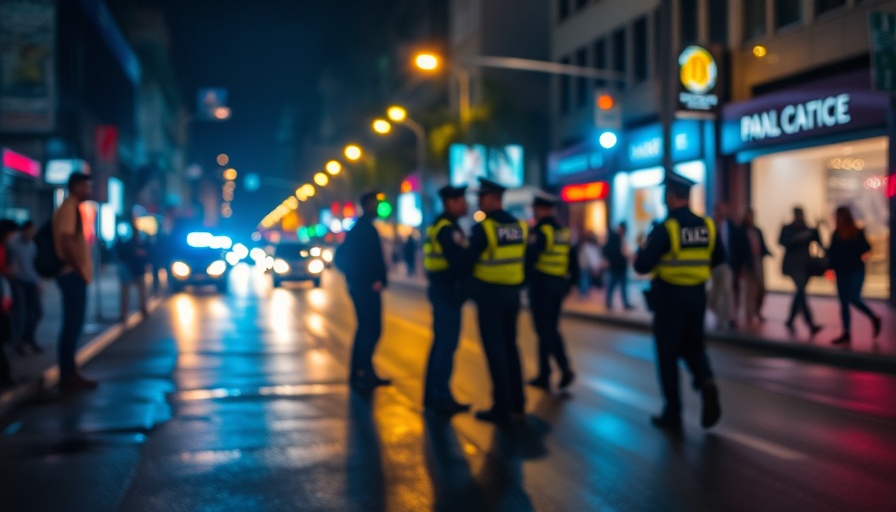
A Shocking Incident: What Really Happened
In a startling event, a man armed with a chainsaw pushed the boundaries of public safety at the River Glen of St. Charles senior living facility, elevating the discussion surrounding police protocol and community safety. Body camera footage captured a chaotic scene where swift police action was necessitated by a man whose erratic behavior was potentially life-threatening. This incident not only raises questions about the nature of police response but also highlights the vital role that body cameras play in providing transparency during critical situations.
Understanding the Response: Officer-Involved Shooting Explained
The officer who fired the fatal shot entered a fraught situation. Initial calls to 911 indicated that a man was brandishing a chainsaw within the facility. Given the close proximity to vulnerable citizens, it fell upon the officer to make rapid judgments, starkly illustrating the heightened risks officers face while maintaining public order. After attempts to subdue the assailant with a TASER proved ineffective, the officer’s usage of deadly force was later deemed justified by the state's attorney's office, setting a precedent for discussions concerning police accountability and appropriate use of force.
Legal and Social Implications: A Case Study in Police Accountability
This incident is more than just a routine police action; it’s a profound case study in police accountability and public safety. With the state’s attorney supporting the officer’s actions, a question remains about what standards the police should adhere to when engaging with mentally unstable individuals or those under the influence of drugs, as was the case here with methamphetamine found in the man’s system. The implications extend into discussions on mental health crises and how law enforcement can better collaborate with mental health services to de-escalate situations without resorting to deadly force.
Enhancing Public Safety: The Role of Technology in Policing
As incidents like these call for heightened scrutiny, the integration of technology in policing, such as body cameras and AI analytics, stands at the forefront of potential reforms. Tools like these can enhance transparency and build community trust, enabling departments to not only document incidents but also analyze patterns that could predict and prevent future conflicts. Investing in police technology has never been more crucial, as it not only aids law enforcement in doing their job effectively but also reassures the public about accountability and oversight.
From Chaos to Community Connection: The Road Ahead
It isn't enough to simply react to events like these; there's a pressing need for proactive measures within community policing strategies. Departments nationwide are reevaluating their approaches, especially in crisis intervention training. Fostering relationships within the community can reduce both the number of confrontations and instances of escalated responses. It’s essential for law enforcement agencies to engage not just reactively but also collaboratively, ensuring they are seen as protectors and not adversaries during such critical instances.
A Call to Action for Policymakers and Law Enforcement Leaders
As this unfortunate event has shown, the intersection of public safety, officer well-being, and community trust warrants urgent attention. Policymakers must champion reforms that bolster officer training in mental health crisis management and encourage the adoption of advanced technologies in policing. Developing robust policies around police use of force can protect both officers and citizens. It's imperative for law enforcement organizations to engage with communities meaningfully, building more profound trust and understanding as we move forward.
In light of these findings and the alarming nature of this incident, it’s crucial for all stakeholders—community members, law enforcement, and policymakers—to participate in dialogues that aim to enhance public safety measures while ensuring the rights and safety of all residents.
 Add Row
Add Row  Add
Add 

 Add Element
Add Element 




Write A Comment